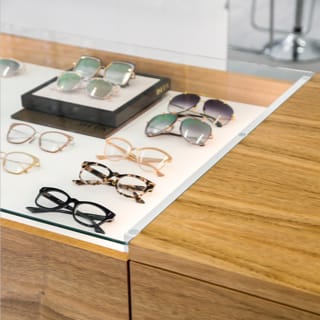As a parent, the health and well-being of your child are likely your top priorities. When it comes to their eyesight, early intervention through children’s eye exams can be vital in slowing down the progression of conditions like myopia, commonly known as nearsightedness.
In today’s digital age, where children spend a substantial amount of time indoors and in front of screens, it’s more crucial than ever to be proactive about their eye health.
Let’s dive into 5 essential tips to slow myopia progression and maintain good eye health in kids. These include:
- Encourage outdoor time
- Manage screen time
- Set up proper lighting
- Promote a healthy diet
- Schedule regular eye exams
Understanding Myopia in Children
Before we explore the tips, it’s crucial to understand what myopia is and why it’s a growing concern in children. Myopia occurs when the eye grows too long from front to back, or the cornea (front surface of the eye) is too steep. This makes distant objects appear blurry, while close objects can be seen clearly.
In children, myopia typically starts between the ages of 6 and 12. It can worsen as they grow, which can lead to a higher risk of eye health problems later in life, such as retinal detachment, glaucoma, and myopic macular degeneration.

TIP 1: Encourage Outdoor Time
One of the most effective ways to prevent or slow myopia is by encouraging your child to spend more time outdoors. Studies have found that children who spend more time in natural light outdoors and perform activities like sports that involve more distance vision are less likely to develop myopia.
The 20-20-20 Rule might be helpful, which recommends that for every 20 minutes of near work (like reading or using a computer), kids should look into the distance (about 20 feet away) for at least 20 seconds. It’s not just about looking into the distance but also getting enough natural sunlight, which has shown significant benefits for eye health.
TIP 2: Manage Screen Time
Digital devices are a significant part of children’s daily lives, from educational content to recreational activities. However, excessive screen time has been associated with an increased prevalence and progression of myopia.
To manage this, set clear boundaries on screen time, ensuring regular breaks to rest the eyes. Use antireflective and blue light-blocking treatments on eyeglasses, in addition to filters on devices, teaching children how to adjust the settings to reduce the amount of glare from light sources and ease the discomfort of digital eye strain.
TIP 3: Set Up Proper Lighting
When your child does need to use electronic devices, make sure the environment has proper lighting. Good lighting is important for eye health and can reduce eye strain. Whether it’s natural or artificial light, it should be spread evenly across your child’s workspace to minimize glare and make it easier to see.
Using adjustable and age-appropriate reading lamps can help control the direction and intensity of light, promoting better visual conditions for your child while they study or read.
TIP 4: Promote a Healthy Diet for Eye Health
Diet and nutrition play significant roles in overall health, including eye health. Make sure your child’s diet includes foods rich in essential eye health nutrients, such as omega-3 fatty acids, lutein, zinc, and vitamins C and E.
Although these nutrients do not necessarily reduce the risk of developing or slowing myopia, they are important in promoting good eye health. Consider incorporating more leafy greens, fish, and nuts into your child’s meals, or talk to a healthcare provider about the need for supplements if necessary.
TIP 5: Schedule Regular Eye Exams
Regular eye exams can help detect vision problems early. Children usually should have their first eye exam at 6 months of age, their second by 3 years of age, and then annually thereafter, depending on recommendations by their eye care professional.
Early detection can mean early intervention, and in some cases, tools like specialty contact lenses (dual-focus, orthokeratology, or multifocal) may be recommended for managing myopia. It’s important not to wait until your child complains of vision problems, as they may not realize they have an issue.
The Wrap-Up
By implementing these tips, you can provide an empowering environment for your child’s eye health and help them have the best odds against myopia. While genetics plays a part in the development of nearsightedness, a proactive approach to children’s eye health can significantly slow down its progression. Your child’s vision is a priceless part of their development and learning process. By following these tips, you’re not only promoting healthier eyes but are also setting the stage for a lifetime of good eye health practices. Start implementing these tips today and see how your child’s vision can thrive. Book an eye exam with us at Eye Love Optometry today to learn more about myopia control.
















